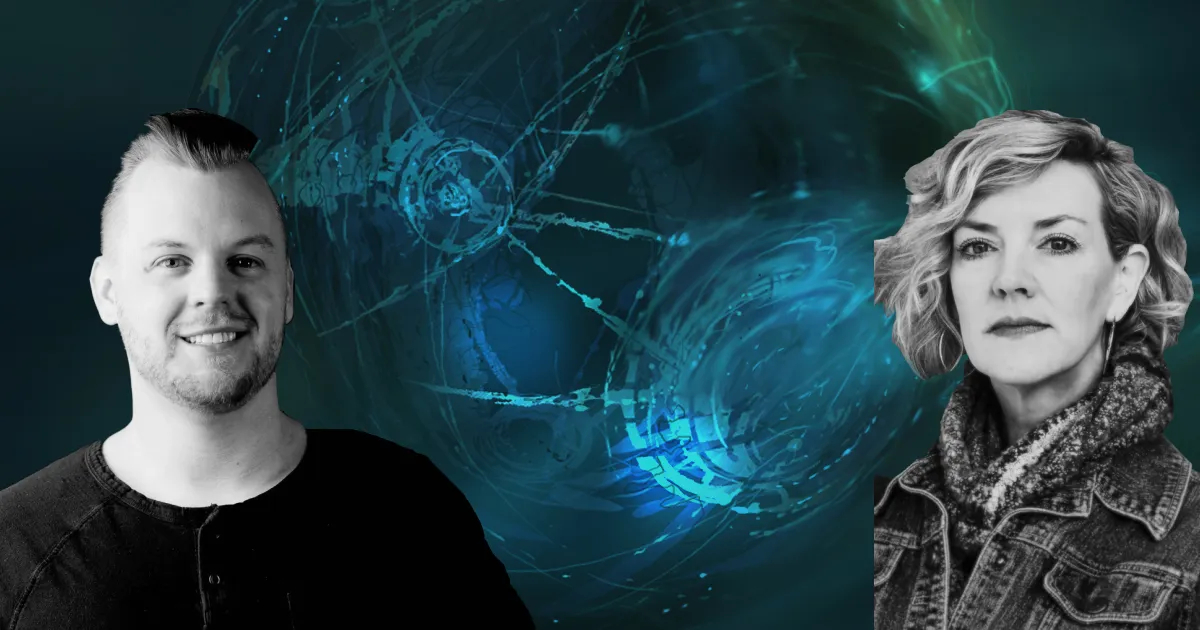The first Unioverse comic is out and available to order now! We told you all about the comic series last week, and to celebrate its official release, we decided to sit down with the comics’ writers, Josh Viola and Angie Hodapp. This is a great Q&A that pulls back the curtain just a little on the creation of the comics, and even offers some sage advice for anyone who wants to make a Unioverse comic of their own!
CHRIS ALBRECHT: What can fans expect from Unioverse comics?
JOSH VIOLA: It’s a six-issue limited series and the first five introduce the Unioverse Heroes. The first is Reyu, then Krishah, Tor Gret, Anill, and Vella Janx. We’re establishing those characters in each of their comics. And then there’s a narrative thread that connects the five and in issue six, we bring all the Heroes together and introduce the villain, Silas. That will likely be a triple-sized issue that ends with a cliffhanger.
Tell me your approach to creating these stories for the Unioverse.
ANGIE HODAPP: Yeah, so we’re getting fans of the world caught up on these particular characters. What drives them? What their agenda might be, which among them are friends, or enemies, what conflicts exist between them? How will they be forced to work together, what might drive them further apart? I’ve always thought of the comics as seeding the world. If the invitation is to invite people to create in this playground, then, you know, here you go, here’s how we’re gonna get you started. I really loved helping develop the villain too, giving us that immediate conflict. So here are some heroic characters who are morally gray and interesting, but now we’ve got this big bad guy – and we get a little glimpse of his agenda. There’s also another threat that will exist that we’re hoping that creators will kind of run with and play with, as well.
VIOLA: I think we can tease some story elements at this point. The community was introduced to the Malcolm Orion story, which set the stage for the rules and the worldbuilding for people to understand. So we don’t spend much time establishing what those rules are, because that’s already been done. Anybody who follows us knows that Malcolm Orion went through the first transpod and reactivated The Hub and changed this world 500 years ago. Our story picks up there, and our villain, Silas, is a member of a hivemind species. When Malcolm Orion activated the Mass-O, the Creator Tech emitted frequencies that disrupted Silas’s hivemind. In a matter of seconds, his people were isolated across the cosmos. So Silas is on a mission to shut down the Mass-O, and reconnect his people. That’s his goal.
The Unioverse is many things and will be told across many different media. What are you hoping comics can do that some other format wouldn’t do?
VIOLA: What I think people need to understand is that the comics are actually setting the stage for what the Unioverse is all about. The Malcolm Orion story was purely backstory, that’s just introducing concepts, right? So the comic book is inviting the readers to understand who these characters are, what the various worlds across the Unioverse are like, and what the new threats are.
HODAPP: Doing that in comic book form is really kind of fun, because we’ve got such a great artist on board in Ben Matsuya. The visuals themselves are just absolutely stunning. It’s also a very accessible medium, I think, for the community to be introduced to the world.
You’ve both written books. How did you adapt your writing to the comics medium?
VIOLA: Well, we really didn’t. I come from comics as well. I’ve been building comic books since back in 2010. I’ve released a number of comics via my publishing company, Hex Publishers, as well. We’re still writing a huge amount of words because we’re scripting — we’re writing the descriptions of each scene. So visually, the readers don’t see those words. But Ben is taking those words and translating them into some gorgeous artwork.
HODAPP: In my world of editing long-form fiction, the more I’ve done it, the longer I’ve done it, the more I’ve become very focused on ‘cut this out, cut this down, cut this down. Why is this here? This chapter is extraneous. It doesn’t do anything.’ Especially working with people who write horror, science fiction, fantasy — these kind of big worldbuilding types of genres, authors tend to overwrite. So when manuscripts come in from a client, and it’s 120,000 words, and we’re like ‘No, we’re not going to shop this until we’re down to about 85 or 90,000 words at the most.’ So my brain is always very focused on cut this, cut this, cut this. And then, over the years, I’ve really learned how to distill a story down to its simplest form, everything else can go. That was kind of a fun thing for me in writing the comics. Just to get to write a bare bones story. Ben does a great job of translating what was in our imaginations. It’s just stunning.
Can you say more about the process of matching your words with Ben’s art?
VIOLA: Obviously, it starts with our words and then Ben is transforming the words into visuals. I send a script to Ben, he reads it, processes it and sends me very rough, stick figure layouts. Then I go back and forth with him and make sense of how the composition works from panel to panel until we’re good. After that, he goes in and the real magic happens: line art, inks and colors.
How long have you been working on this comic?
HODAPP: I think we started last July, laying down the outlines. And at first, it was just going to be two comic books. And then it was like ‘hey, maybe let’s do one for each hero! And hey! maybe let’s do another one for the villain! And maybe let’s make that a tripe issue!’ I think we realized it was going to be a cool project and wanted to do it right.
What advice do you have for those in the Unioverse community that might want to create their own comics?
HODAPP: I’d say just narrow the scope of the story. If you’re a new storyteller, generally, newer writers want to be big in scope. They want to write 12 volumes of their George R.R. Martin-esque fantasy, or their Neal Stevenson volumes of science fiction, right? I would recommend it’s a character in conflict. And they find some sort of resolution and that happens over the course of the narrative. If it’s a comic book, keep it simple. Keep it focused, keep that lens tight on this character. Why is this story this character’s story and nobody else’s story? And let that drive the plot.
VIOLA: I’ll just add that it’s important to find an artist you can collaborate well with, and vice versa. Make sure you can piggyback off of each other. Collaborations can be beautiful when there’s that chemistry between all of the people involved.
Unioverse comic books are available digitally or limited edition print runs at Hex Publishers.
If you want to create your own Unioverse comic, download official Unioverse assets, royalty-free!
If you want to find potential collaborators for a project, join the Unioverse Discord channel!

